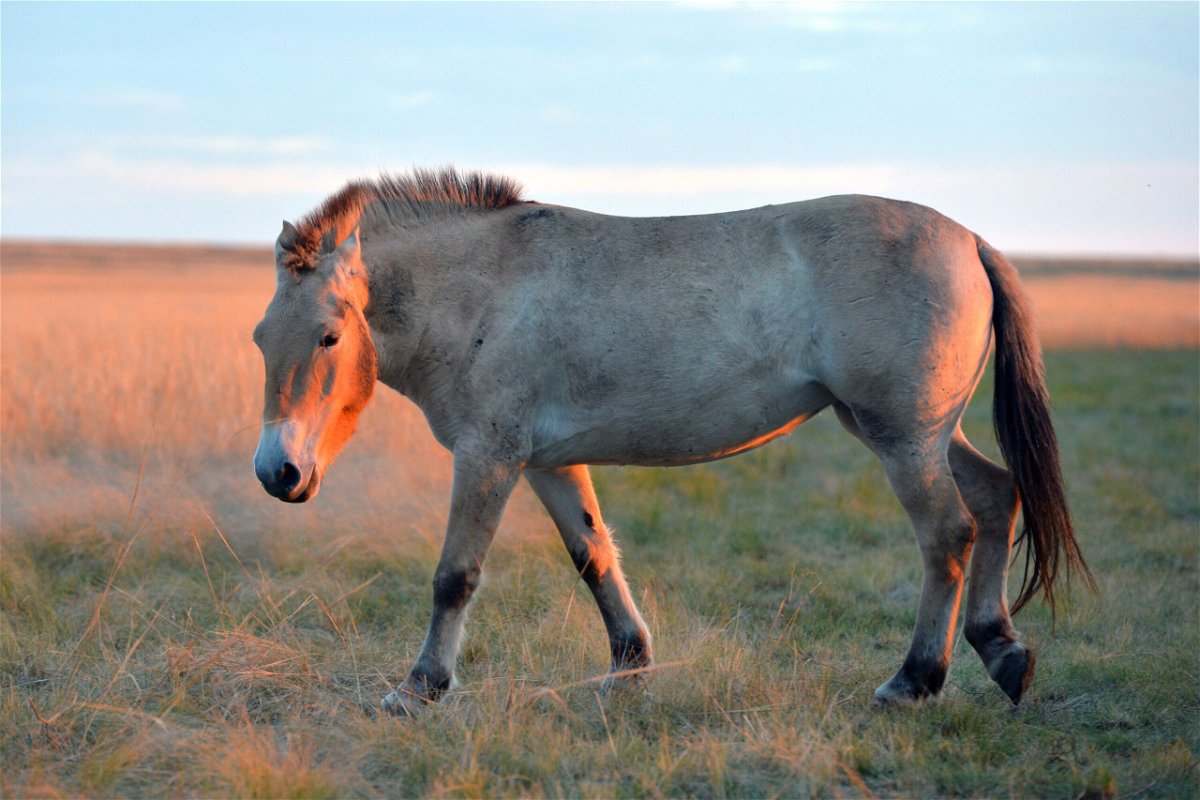‘Frozen zoos’ may be a Noah’s Ark for endangered animals

Przewalski's horse
By Ashley Strickland, CNN
Foresight is an incredible gift — and it may be one of the most valuable scientific tools we have.
When NASA scientists kept some of the Apollo lunar samples sealed rather than opening them like kids on Christmas morning once astronauts had returned from the moon, they began a longstanding tradition.
It continues to this day. Portions of the samples returned from the asteroids Ryugu and Bennu, and even Perseverance’s cache from Mars, will be set aside for future generations.
The idea is that decades from now, researchers will have much better technology to unlock the secrets of celestial bodies.
The same principle applies to preserving precious things on Earth. Fortunately, one man with a conservation vision 50 years ago created a legacy that has become a blueprint for saving the world’s most vulnerable species — before it’s too late.
Back to the future
Collecting the skin samples of rare and endangered animals may have seemed like a radical idea in 1972, but University of California San Diego researcher Kurt Benirschke thought it might be useful in the fight to prevent species from disappearing.
He died in 2018, but his idea lives on and has become the world’s largest animal cryobank. The Frozen Zoo is the safe haven for samples from 1,220 species.
The cryobank has provided genetic material to revive rare species like Przewalski’s horse and the black-footed ferret through cloning.
Now, experts see cryobanks, and a tightly coordinated effort, as crucial, especially as the climate crisis threatens plummeting animal populations worldwide.
Defying gravity
After a record-breaking 355 days in space, NASA astronaut Mark Vande Hei returned to Earth this week, landing in Kazakhstan alongside two Russian cosmonauts.
Extended missions allow researchers to study the effects of long-duration spaceflight on the human body, which can better prepare NASA to send astronauts to the moon and on to Mars through the Artemis program.
Things are heating up as the Artemis I spacecraft undergoes its most crucial test yet this weekend. The stacked rocket and spacecraft began a wet dress rehearsal Friday that will last through Sunday.
The rocket will go through every launch stage without leaving the launchpad. The test results will determine when Artemis I lifts off later this year for an uncrewed flight to the moon and beyond.
Across the universe
Say hello to Earendel, or the “morning star,” the most distant single star ever observed by humans, thanks to the Hubble Space Telescope.
It was born just 900 million years after the big bang. The light has taken 12.9 billion years to reach us. Now, astronomers want to study the star using the James Webb Space Telescope to unravel mysteries from the early days of the universe.
Meanwhile, researchers analyzed images of Pluto taken by NASA’s New Horizons mission and discovered a surprise: giant ice volcanoes that may still be active on the dwarf planet’s frozen surface.
These ice volcanoes could suggest a subsurface ocean on Pluto today. The discovery raises intriguing ideas about the distant world’s habitability.
Fantastic creatures
It was a stormy Independence Day in 2005 when flamingo No. 492 flew away from Kansas’ Sedgwick County Zoo.
Now, 17 years later, the bird, nicknamed Pink Floyd, has popped up in Texas.
Pink Floyd, originally one of 40 flamingos the zoo brought in from Tanzania, still wears a band with his number on it. And he seems to be living the good life along the Gulf Coast, snacking on brine shrimp in the sun.
The zoo hasn’t tried to reclaim the rogue bird. People are really his only threat, so if you see Pink Floyd, give him some well-deserved space.
At 20 years old, Pink Floyd has a long life ahead of him. Shine on, you crazy diamond.
Ocean secrets
Earth’s oceans are full of wonders, beautifully captured by photographer and cinematographer Shawn Heinrichs.
“As a kid I spent every weekend around the oceans — it has more abundance than you could ever imagine,” Heinrichs told CNN. Growing up along South Africa’s coast inspired him to protect the rich diversity of marine life.
While many of Heinrich’s images showcase stunning sea creatures, others depicting human mistreatment of the animals are purposely difficult to view — but they equally inspire action to save the magnificent, fragile life beneath the waves.
Discoveries
A few more stops along this week’s Fascination Street:
– Lunar dust collected by Neil Armstrong during the Apollo 11 mission is up for auction, and it’s worth an out-of-this-world price.
– A “killing stone” was found cracked in half in Japan’s Nikko National Park — and it just may have allowed a trapped nine-tailed fox spirit to break free, according to Japanese mythology. But there’s more to this tale than meets the eye.
– We’ve been calling Machu Picchu by the wrong name for over a century. Now, anthropologists have finally uncovered what the Incas called the ancient city.
Like what you’ve read? Oh, but there’s more. Sign up here to receive in your inbox the next edition of Wonder Theory, brought to you by CNN Space and Science writer Ashley Strickland, who finds wonder in planets beyond our solar system and discoveries from the ancient world.
The-CNN-Wire
™ & © 2022 Cable News Network, Inc., a WarnerMedia Company. All rights reserved.